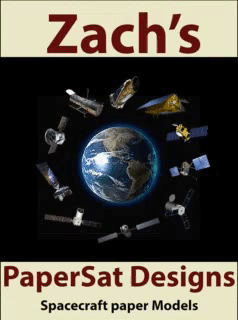
Other Paper Model Websites
Spacecrafts - Satellites
Page 2
85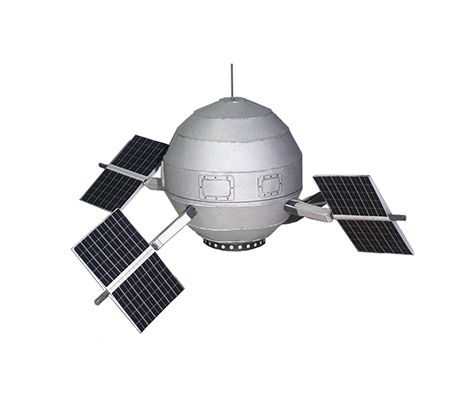 86
86
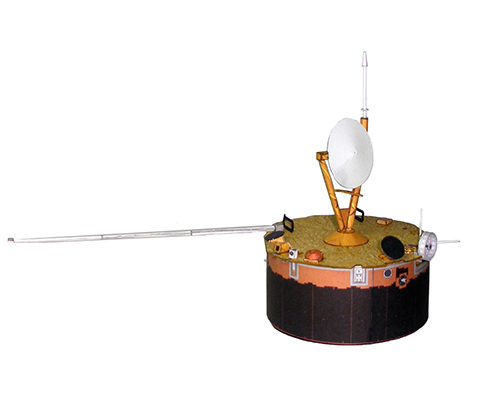 87
87
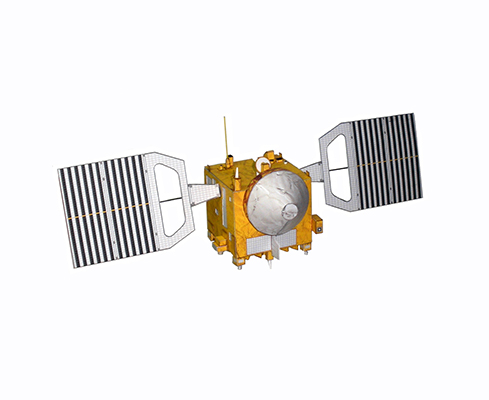 88
88
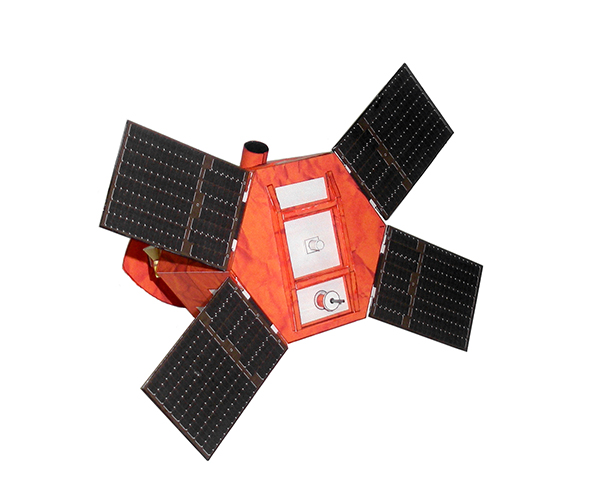
85.. Pioneer 5 - NASA's Pioneer 5 provided the first map of the interplanetary magnetic field. The spacecraft had originally been intended for a Venus encounter, but the mission was switched to a direct entry into solar orbit. Pioneer 5 carried Telebit, the first digital telemetry system operationally used on a U.S. spacecraft. It was first tested on Explorer 6. The spacecraft was launched on March 11, 1960.
Download
86.. Pioneer Venus 1 - Pioneer Venus consisted of two spacecraft launched separately to study Venus: the orbiter and the multiprobe. The Pioneer Venus 1 orbiter was launched May 20, 1978, from the Kennedy Space Center aboard an Atlas- Centaur rocket. It went into orbit around Venus on Dec. 4, 1978. The orbiter peered through the clouds and produced the first radar topographic map of most of the surface. It found a relatively smooth planet, with the highest point, Maxwell Montes, at about seven miles (11 kilometers) above the surface. The orbiter's cameras also detected continuous lightning. After a successful 14-year mission, it entered Venus' atmosphere on August 1992.
Download
87.. Venus Express - was the first Venus exploration mission of the European Space Agency (ESA). Launched in November 2005, it arrived at Venus in April 2006 and began continuously sending back science data from its polar orbit around Venus. Equipped with seven scientific instruments, the main objective of the mission was the long term observation of the Venusian atmosphere. The observation over such long periods of time had never been done in previous missions to Venus, and was key to a better understanding of the atmospheric dynamics. It was hoped thatsuch studies can contribute to an understanding of atmospheric dynamics in general, while also contributing to an understanding of climate change on Earth. ESA concluded the mission in December 2014.
Download
88.. Deimos-2 - Deimos-2 is a Spanish remote sensing Earth observation satellite built for Elecnor Deimos under an agreement with Satrec Initiative, a satellite manufacturing company in South Korea. is a follow-on imaging mission of Deimos-1 Imaging S. L. U., an Elecnor company of Boecillo, Spain. The Deimos-2 mission is aimed at operating an agile minisatellite for high-resolution EO (Earth Observation) applications. Launched in June 2014.
Download
89
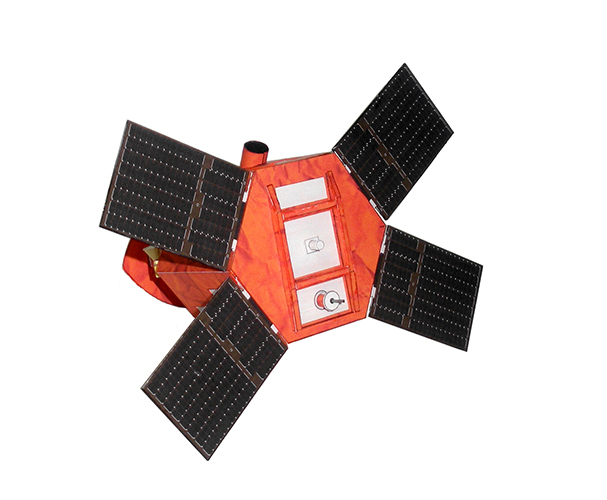 90
90
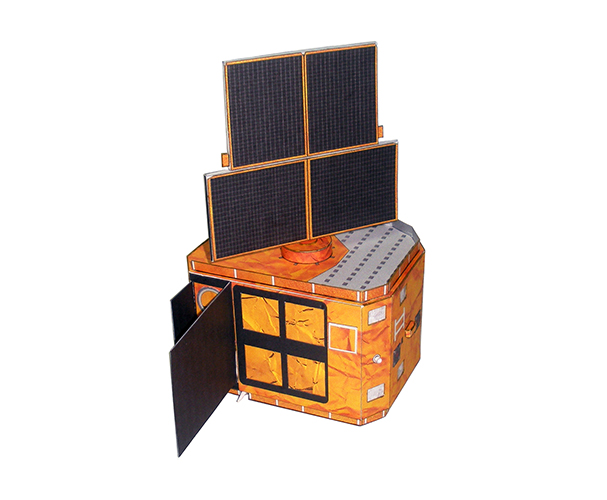 91
91
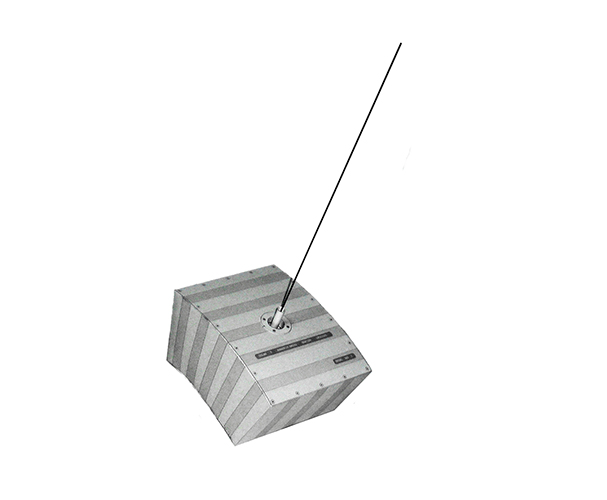 92
92
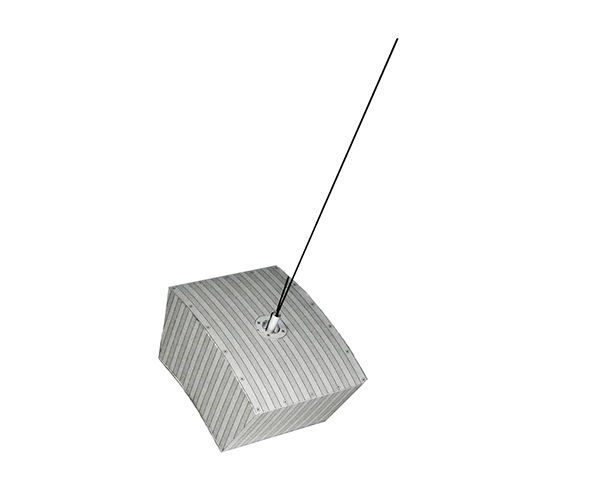
89.. DubaiSat-2 - Deimos-2 almost-identical twin.DubaiSat-2 is an electro-optical Earth observation satellite built by the Emirates Institution for Advanced Science and Technology under an agreement with Satrec Initiative, a satellite manufacturing company in South Korea. EIAST's objective with DubaiSat-2 is to provide electro-optical images, that can be commercialized, for users within theUnited Arab Emirates and beyond and to develop and implement new technologies not used in DubaiSat-1. Launched on November 12, 2013.
Download
90.. Exosat ( European X-ray Observatory Satellite) - was an X-ray telescope operational from May 1983 until April 1986 and in that time made 1780 observations in the X-ray band of most classes of astronomical object including active galactic nuclei, stellar coronae, cataclysmic variables, white dwarfs, X-ray binaries,clusters of galaxies, and supernova remnants. EXOSAT was also unusual at the time because it featured an onboard computer. It was also the forerunner of current X-ray telescopes such as ESA's XMM-Newton and NASA's Chandra satellite.
NOTE: This kit contains both detailed and easy versions.
Download
91.. OSCAR-1 (Orbiting Satellite Carrying Amateur Radio) - Amateur Radio's first satellite, Launched on December 12, 1961, barely four years after the launch of Sputnik I. It was the world's first piggyback satellite and the world's first private non-government spacecraft. OSCAR I lasted 22 days ceasing operation on January 3, 1962, and re-entered January 31, 1962.
Download
92.. OSCAR-2 (Orbiting Satellite Carrying Amateur Radio) - is the second amateur radio satellite launched by Project OSCAR into Low Earth Orbit. OSCAR II was launched June 2, 1962.
Download
93
 Model.jpg) 94
94
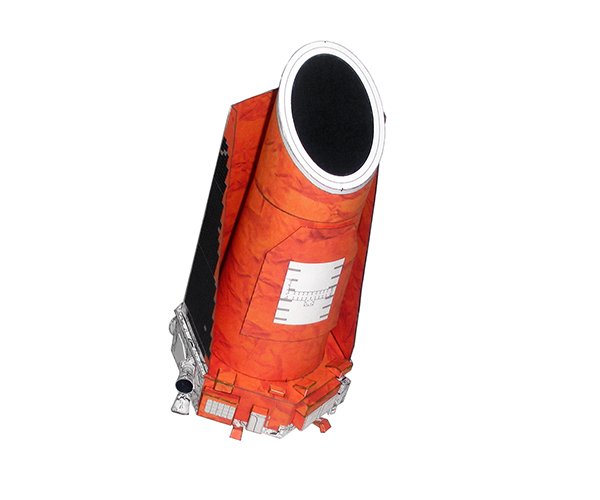 95
95
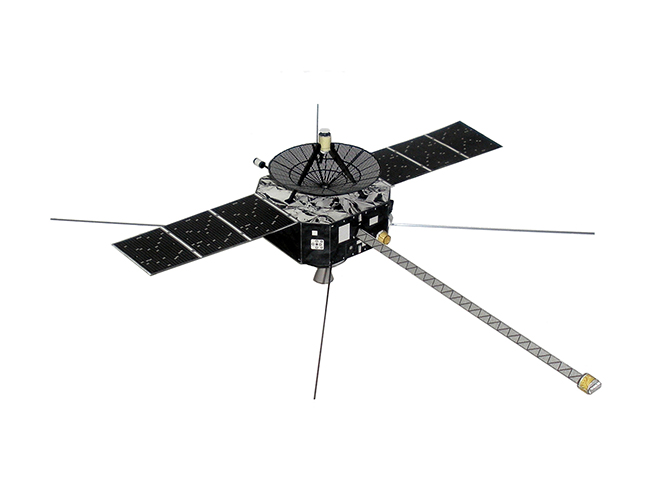 96
96
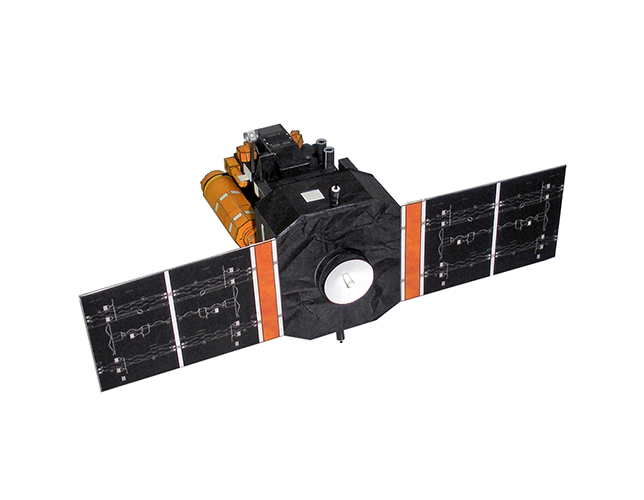
93.. Reflector (Retroreflector Ensemble For Laser Experiments, Calibration, Testing and Optical Research.) - The REFLECTOR microsatellite development is a result of a joint effort of IPIE (Russia) and AFRL (USA) was successfully launched December 10, 2001.It is a free-flying, passive (un-powered) spacecraft carrying several groups of retroreflectors with specified spacing between them, intended for testing and calibration of high-resolution ground-based optical telescopes when laser illumination of targets is used.
Download
94.. Kepler space telescope (K2) - The Kepler mission has revolutionized exoplanet science, surveying more than 150,000 stars in one region of our galaxy and discovering an incredible diversity of planets (More than 2,526 confirmed planets) orbiting other stars. The spacecraft was launched on March 7, 2009 and s retired on October 30, 2018.
Download
95..Nozomi (Planet-B) - Nozomi (Japanese for Hope and known before launch as Planet-B) was Japan's first interplanetary spacecraft and was a planned Mars orbiting aeronomy mission designed to study the martian upper atmosphere and its interaction with the solar wind and to develop technologies for use in future planetary missions.A faulty valve resulted in loss of propellant, leaving the spacecraft with insufficient acceleration to reach its nominal trajectory. The spacecraft passed by Mars at a range of about 620 miles (1,000 kilometers) and remains in heliocentric orbit. Despite not accomplishing its primary mission, Nozomi provided important data from its suite of scientific instruments.
Download
96..SOHO (Solar & Heliospheric Observatory) - is a project of international collaboration between ESA and NASA to study the Sun from its deep core to the outer corona and the solar wind. As a consequence of its observing the Sun, SOHO (specifically the LASCO instrument) has inadvertently allowed SOHO to become the single greatest comet finder of all time discovering its 200th comet as 2010 drew to a close. SOHO had discovered over 2700 comets by April 2014, with an average discovery rate of one every 2.59 days. In September 2015, SOHO discovered its 3000th comet.SOHO was launched on December 2, 1995.
Download
97
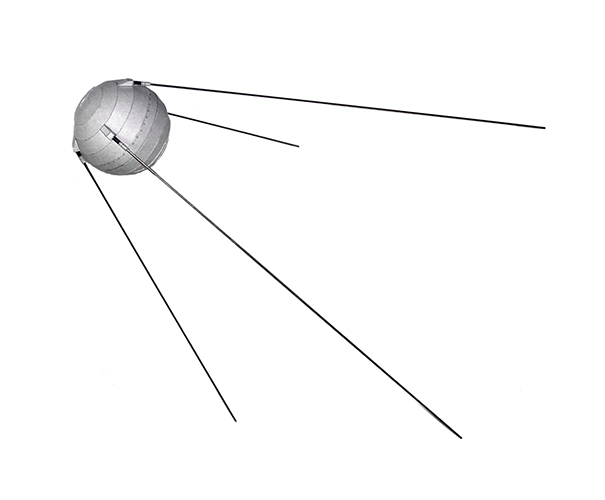 98
98
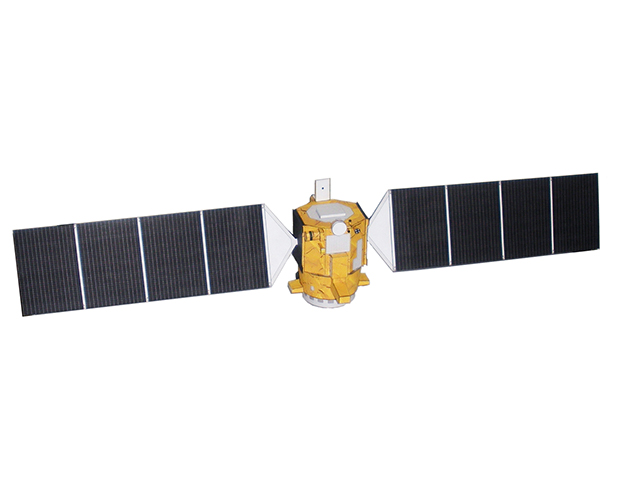 99
99
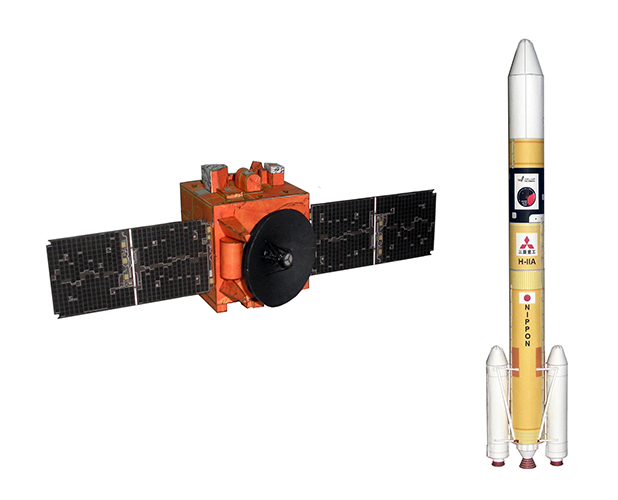 100
100
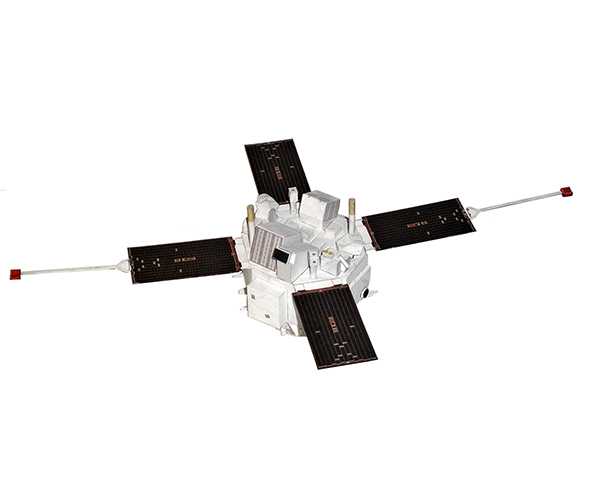
97..Sputnik-1 - Sputnik 1 ("Satellite-1", or Prosteyshiy Sputnik-1,"Elementary Satellite 1") was the first artificial Earth satellite. The Soviet Union launched it into an elliptical low Earth orbit on October 4, 1957, orbiting for three weeks before its batteries died, then silently for two more months before falling back into the atmosphere. It was a 58 cm (23 in) diameter polished metal sphere, with four external radio antennas to broadcast radio pulses.
Download
98..Deep Space-1 - Deep Space 1 was the first interplanetary spacecraft to use an ion engine. Deep Space 1 far outstripped its primary mission goals by also successfully flying by the asteroid 9969 Braille and comet Borrelly. The flybys produced what are still considered some of the best images and data ever collected from an up-close encounter with an asteroid or comet. Launched on October 24, 1998.
Download
99..Hope (Al Amal) Mars probe and H-II launch vehicle - The United Arab Emirates has taken a historic first step to interplanetary exploration, with the launch of the Arab world's first mission to Mars. The Hope, or Al Amal, spacecraft departed Earth from Tanegashima, Japan onboard an H-IIA rocket. The spacecraft will create mankind's first integrated model of the Red Planet's atmosphere. Launched on July 20, 2020. NOTE: This kit contains both the spacecraft and the H-IIA launcher.
Download
100..Advanced Composition Explorer (ACE) - collects and analyzes particles of solar, interplanetary, interstellar and galactic origins. The data contributes to our understanding of the Sun, its interaction with Earth, and the evolution of the solar system. ACE robotic spacecraft was launched August 25, 1997. As of 2019, the spacecraft is still in generally good condition, and is projected to have enough propellant to maintain its orbit until 2024.
Download
101
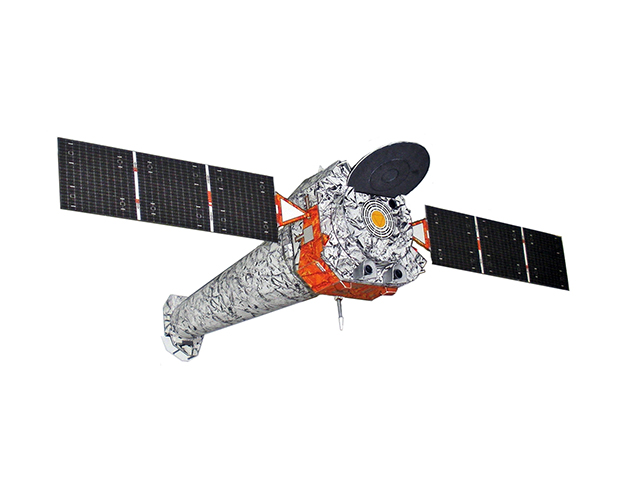 104
104
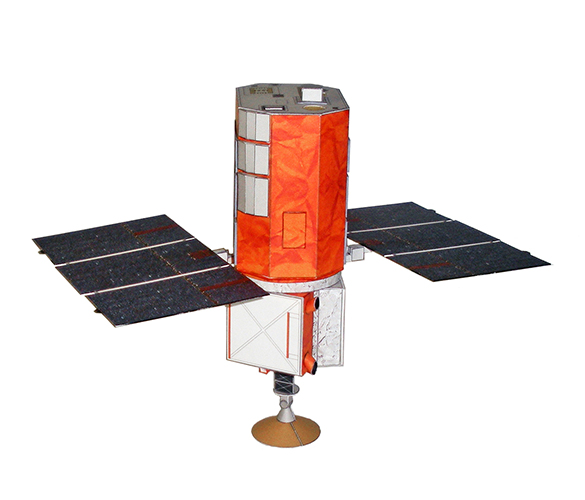
101..Sprite-Sat (RISING) - is a micro satellite in the size of 50 cm cube and weighing less than 50-kg, under the development by Tohoku University. The satellite conducts scientific observation of atmospheric luminous emissions called "sprites". The "sprites" are a type of Transient Luminous Events (TLE) observed in the middle atmosphere (typically 40-90 km altitude, from upper Stratosphere to Mesosphere), which were first discovered in 1989. It is considered that large scale thunderstorms are capable of producing such luminous events over the clouds. SPRITE-SAT was successfully launched from Tanegashima Space Center in Japan on January 23rd, 2009.
Download
102..Sprite-Sat-2 (RISING-2) - is a cooperative microsatellite project of Tohoku University (Sendai) and Hokkaido University, Sapporo, Japan. The primary objective of the mission is Earth observation with a resolution of ~ 5 m. In particular, high-resolution cumulonimbus scenes will be observed using the LCTF (Liquid Tunable Multispectral Filter) technique. The secondary objective is the observation of sprite phenomena in the upper atmosphere.
Download
103.. Chandra X-ray Observatory - is a Flagship-class space telescope launched aboard theSpace Shuttle Columbia during STS- 93 by NASA on July 23, 1999. Chandra is sensitive to X-ray sources 100 times fainter than any previous X-ray telescope, enabled by the high angular resolution of its mirrors. Chandra is designed to observe X-rays from high-energy regions of the universe, such as the remnants of exploded stars.
Download
104..Solar Maximum Mission (SolarMax) - was launched February 14, 1980. It provided new insights into the nature of solar flares and precisely measured the total energy of the sun. It observed more than 12,000 flares and over 1,200 coronal mass ejections during its 10-year lifetime. It provided measurements of total solar output, magnetic field strengths on the sun, storage and release of flare energy and particles accelerated from the sun's atmosphere. On April 11, 1984 SMM became the first satellite in history to be retrieved, repaired, and redeployed in orbit by a Shuttle crew (Challenger, STS-41C, April 6-13, 1984). SMM collected data until November 24, 1989 and re-entered on December 2, 1989.
Note: This model contains both the easy and detailed versions.
Download
105
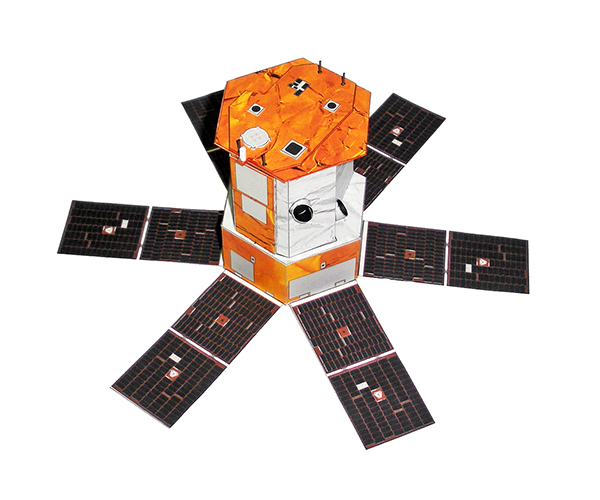 106
106
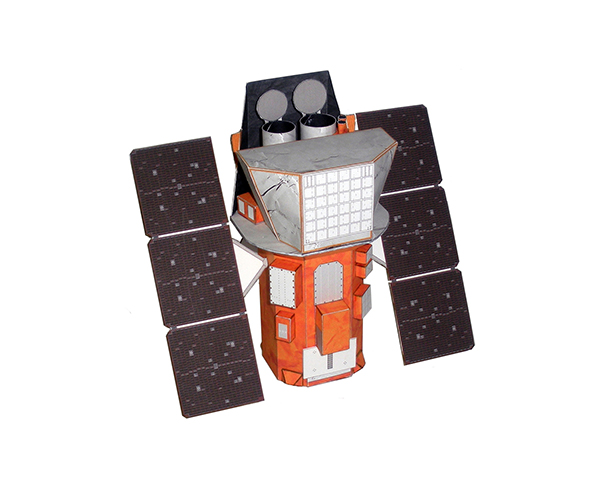 107
107
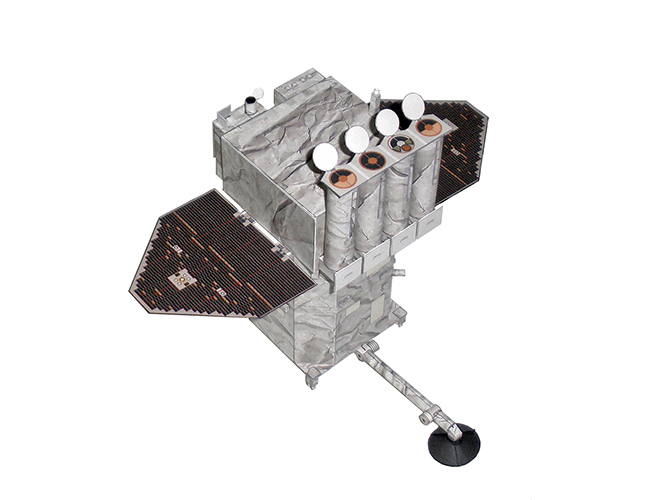 108
108
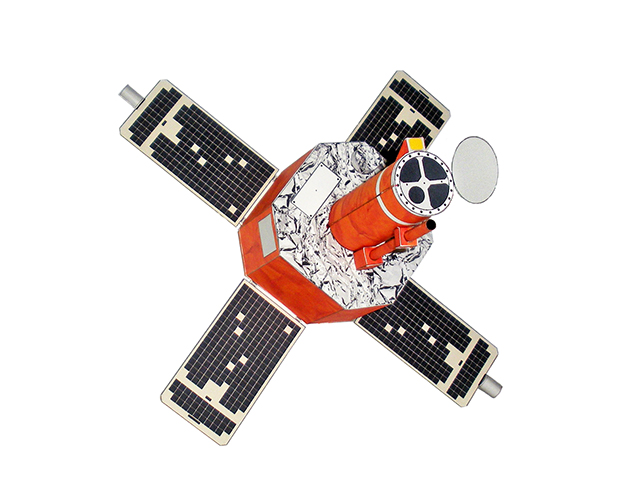
105..Solar Radiation and Climate Experiment (SORCE) satellite - has been providing data on the sun's irradiance for 10 years. SORCE measures electromagnetic radiation produced by the sun and the power per unit area of that energy on the Earth's surface. SORCE has set a new standard of accuracy, precision, and wavelength range for the sun's irradiance. SORCE was launched on January 25, 2003 and began normal operations on March 6, 2003. SORCE data has provided scientists a unique understanding of how the sun varies both slowly and rapidly, affecting Earth's weather and climate systems and ultimately all the life on Earth that depends on the sun's flow of energy. NASA decommissioned SORCE on February 25, 2020, after 17 years of operation (over three times the original design life of five years).
Download
106..Neil Gehrels Swift Observatory - is a NASA space observatory designed to detect gamma-ray bursts (GRBs). It was launched on November 20, 2004, aboard a Delta II rocket. It has the optimum capabilities for the next breakthroughs in determining the origin of GRBs and their afterglows, as well as using bursts to probe the early Universe. Swift will also perform the first sensitive hard X-ray survey of the sky. By 2019, after almost 15 years of operation, Swift had detected more than 1,400 gamma-ray bursts. The most distant of these, GRB 090429B, detected on April 29, 2009, exploded about 13 billion light-years from Earth.
Download
107..Solar Dynamics Observatory - is the first mission to be launched for NASA's Living With a Star (LWS) Program, a program designed to understand the causes of solar variability and its impacts on Earth. SDO is designed to help us understand the Sun's influence on Earth and Near-Earth space by studying the solar atmosphere on small scales of space and time and in many wavelengths simultaneously. SDO's goal is to understand, driving towards a predictive capability, the solar variations that influence life on Earth and humanity's technological systems. SDO launched on February 11, 2010 on an Atlas V from Cape Canaveral.
Download
108..Transition Region and Coronal Explorer (TRACE) - was the first mission to image an entire cycle of solar activity, studying the sun at both its turbulent maximum and demure minimum. TRACE was a satellite mission designed to deepen understanding of our dynamic sun's activity, by exploring the connections between fine-scale magnetic fields and the associated grand-scale plasma structures on the sun. TRACE imaged the magnetic structures which emerge from the photosphere - the visible surface of the sun - and ultimately define the geometry and dynamics of the upper solar atmosphere, composed of the transition region and corona. Trace was launched on April 2, 1998, and obtained its last science image on June 21, 2010.
Download
109
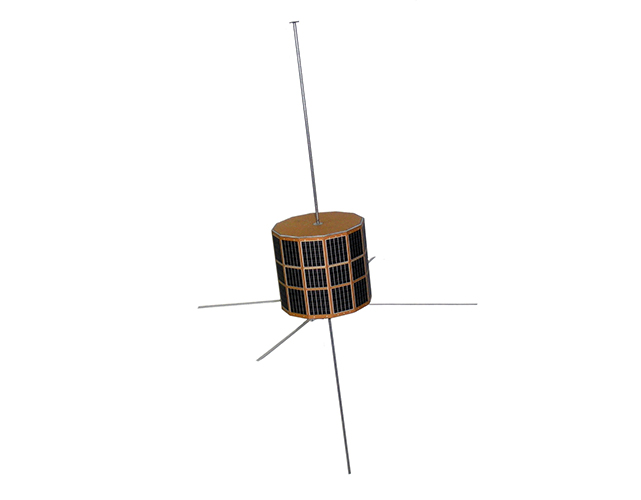 110
110
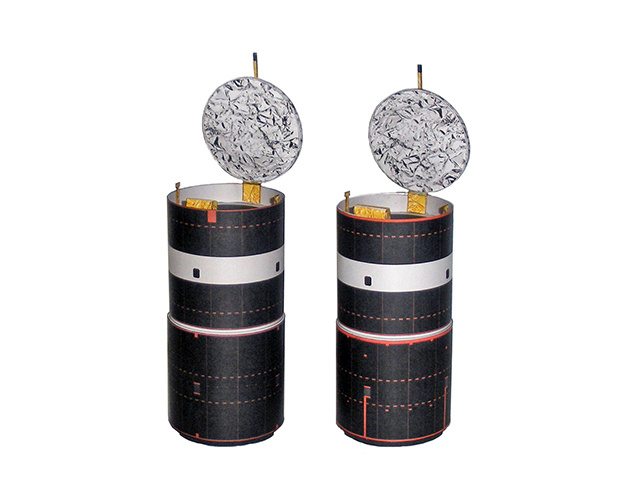 111
111
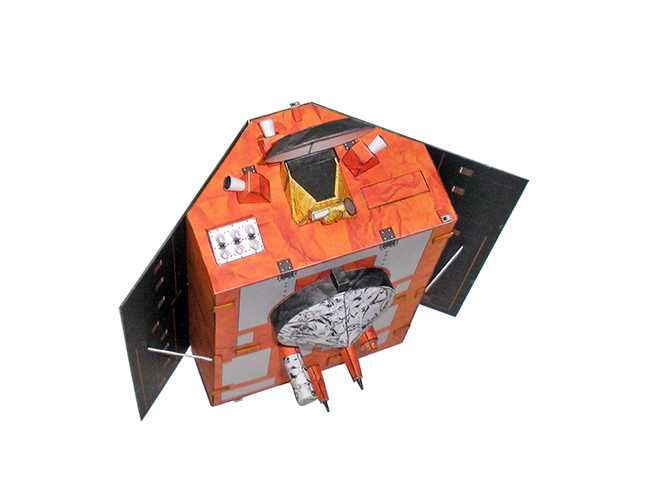 112
112
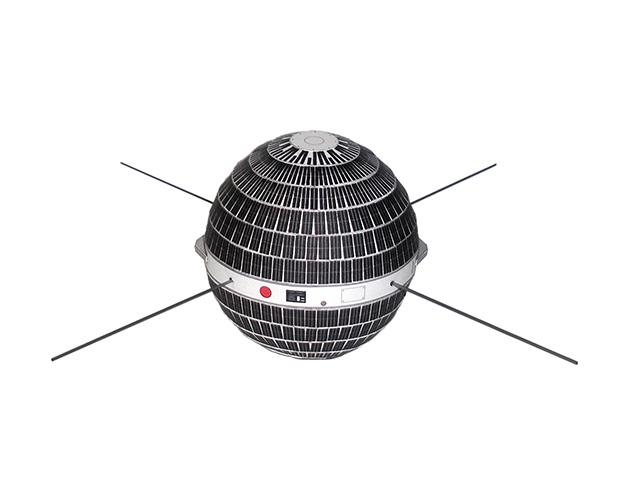
109..Intasat (Instituto Nacional de Tecnica Aerospacial Satellite) - The first Spanish satellite, Launched on November 15, 1974, on a Delta rocket from the Vandenberg base (California).
Download
110.. Palapa B2 and Westar-6 - Were the first satellites in history to be retrieved, repaired and relaunched. On November 1984, Shuttle Discovery (STS 51-A) captured both satellites and returned them back to Earth. They were then repaired and later relaunched under different names.
Download
111..Sentinel-6 Michael Freilich- Designed to measure the height of the ocean - a key component to understanding how Earth's climate is changing - Sentinel-6/Jason CS consists of two identical satellites that will be launched five years apart. The staggered launches will help to ensure the continuation of a decades-long record of sea level observations out to 2030. Sentinel-6 builds on heritage from the Jason series of ocean topography satellites. The first satellite was launched on November 21, 2020 and Sentinel-6B, which will launch in 2025.
Download
112..Courier-1B - Courier 1B, the world's first active repeater communications satellite, was successfully launched October 4, 1960 from Cape Canaveral, Florida. Courier 1B had the capability of "real time" messaging.
Download
113
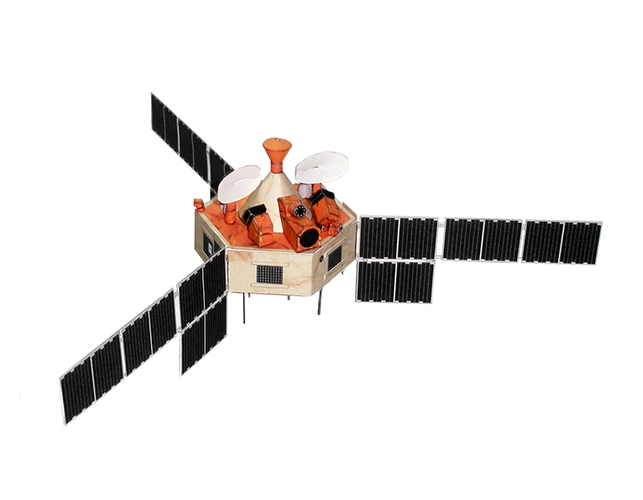 114
114
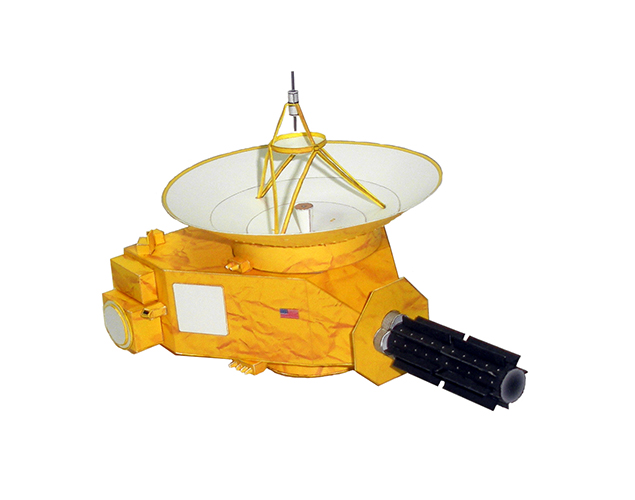 115
115
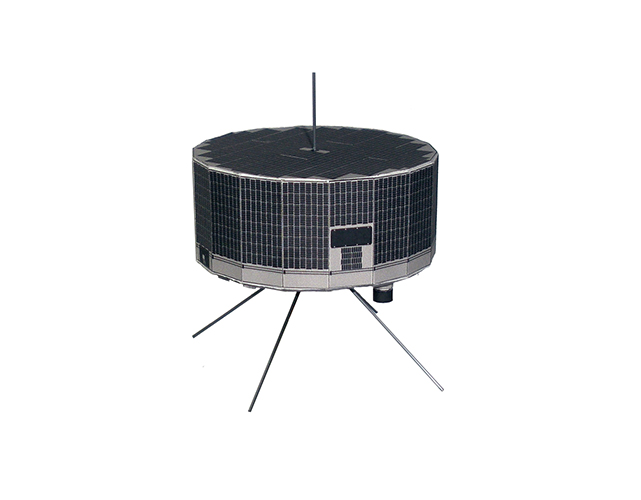 116
116
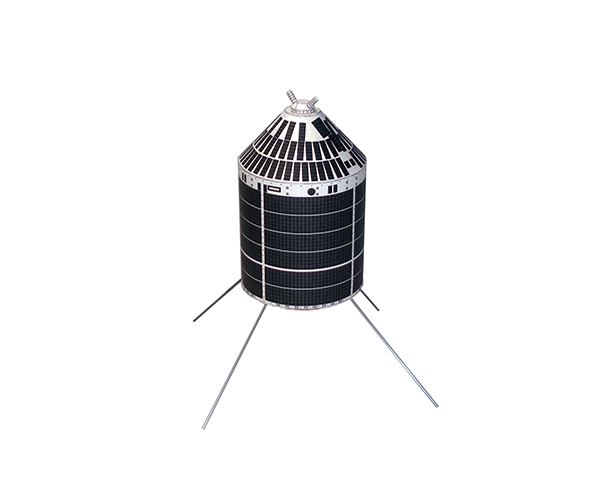
113..Symphonie - The Symphonie satellites (2 satellites orbited) were the first communications satellites built by France and Germany (and the first to use three-axis stabilization in geostationary orbit with abipropellant propulsion system) to provide geostationary orbit injection and station-keeping during their operational lifetime. After the launch of the second flight model, they comprised the first complete telecommunications satellite system (including an on-orbit spare and a dedicated ground control segment). They were the result of a program of formal cooperation between France and Germany. Symphonie A, launched December 19, 1974 from Kennedy Space Center (Cape Canaveral) aboard Delta-2914 rocket.
Download
114..New Horizons - New Horizons is the first mission to explore Pluto and the Kuiper Belt, the "third zone" of our solar system, a region beyond the rocky inner planets and the outer giant gas planets. The spacecraft was launched in January 19, 2006 On July 14, 2015, it flew 12,500 km (7,800 mi) above the surface of Pluto, making it the first spacecraft to explore the dwarf planet.Having completed its flyby of Pluto, New Horizons then maneuvered for a flyby of Kuiper belt object 486958 Arrokoth (then nicknamed Ultima Thule), which occurred on January 1, 2019, when it was 43.4 AU from the Sun.
Download
115..TIROS-I (Television Infrared Observations Satellite) - The world's first weather satellite, was launched on April 1, 1960 from Cape Canaveral, Florida. The main objective of the TIROS program was to demonstrate the feasibility and capability of observing the Earth's cloud cover and weather patterns from space. It also was the first satellite to test sun angle and horizon sensor systems for spacecraft orientation.
Download
116..Azur - Azur was Germany's first satellite that studied the Van Allen belts, solar particles, and aurorae. Azur is German for "sky blue" and was launched into a near-polar orbit on November 8, 1969.
Download
117
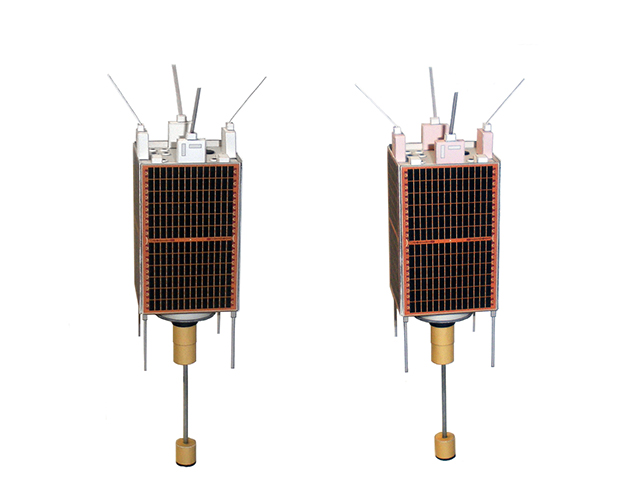 118
118
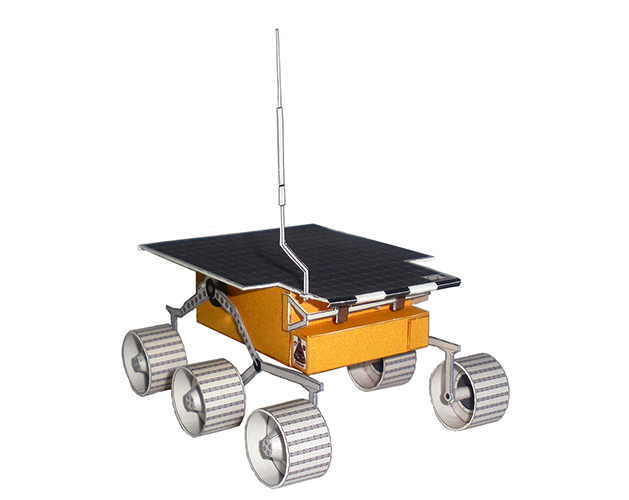 119
119
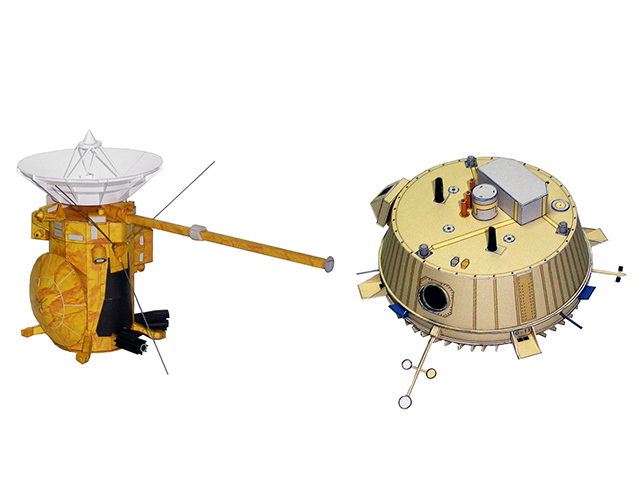 120
120
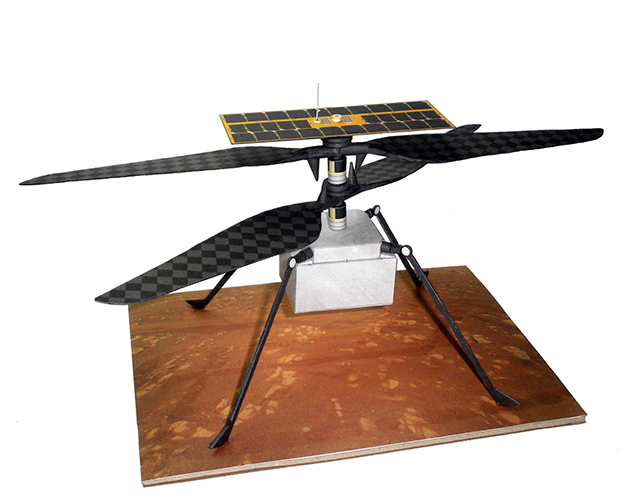
117..FaSat-Alfa and Fasat-Bravo - Fasat-Alfa is a microsatellite , the first artificial Earth satellite manufactured in Chile in cooperation with the University of Surrey , UK .Fasat-Alfa was launched on August 31, 1995 from the Plesetsk cosmodrome using the Cyclone- 3 launch vehicle together with the first satellite of independent Ukraine, Sich-1 . After launching into orbit, the vehicles were supposed to separate. This did not happen, and all onboard systems were disabled on the Fasat- Alfa. The tasks were not completed.
FASat-Bravo was built as a replacement for the failed FASat-Alfa, paying special attention to the separation mechanism. FASat-Bravo became Chile's first successful satellite. It was launched as a secondary charge aboard a Zenit-2 rocket, it took place on July 10, 1998.
Download
118..Sojourner - Sojourner is a robotic Mars rover that landed on July 4, 1997. The rover was the first wheeled vehicle to rove another planet, and was part of the Mars Pathfinder mission. Sojourner was active for 83 sols (85 Earth days). The rover communicated with Earth through the Pathfinder base station, which had its last successful communication session with Earth on September 27, 1997. It traveled a distance of just over 100 meters (330 ft).
Download
119..Cassini-Huygens - a space probe to study the planet Saturn and its system, including its rings and moons. The Flagship-class robotic spacecraft comprised both NASA's Cassini space probe and ESA's Huygens lander, which landed on Saturn's largest moon, Titan. Launched aboard a Titan IVB/Centaur on October 15, 1997, Cassini was active in space for nearly 20 years, with 13 years spent orbiting Saturn while studying the planet and its system after entering orbit on July 1, 2004.
The Huygens module traveled with Cassini until its separation from the probe on December 25, 2004; Huygens landed by parachute on Titan on January 14, 2005. It returned data to Earth for around 90 minutes using the orbiter as a relay. This was the first landing ever accomplished in the outer Solar System and the first landing on a moon other than Earth's Moon.
This kit contains both models.
Download
120..Ingenuity (Mars Helicopter) - Ingenuity is a small robotic solar helicopter operating on Mars as part of NASA's Mars 2020 mission. On 19 April 2021, it successfully completed the first powered controlled flight by an aircraft on a planet besides Earth, taking off vertically, hovering and landing. The battery-powered coaxial drone rotorcraft is serving as a technology demonstrator for the potential use of flying probes on future missions to Mars and other worlds, and will have the potential to scout locations of interest and support the future planning of driving routes forMars rovers. Ingenuity completed 5 successfull flights between April 19 to May 7, 2021.
Download
121
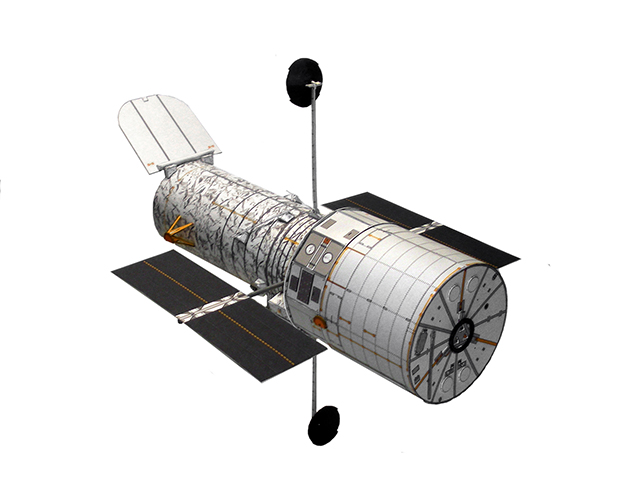 122
122
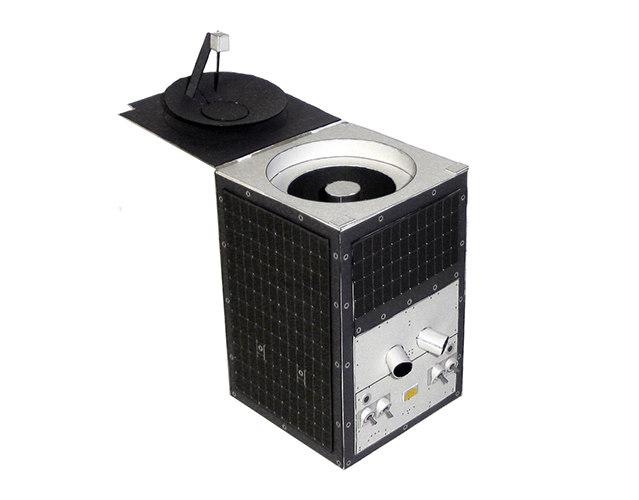 123
123
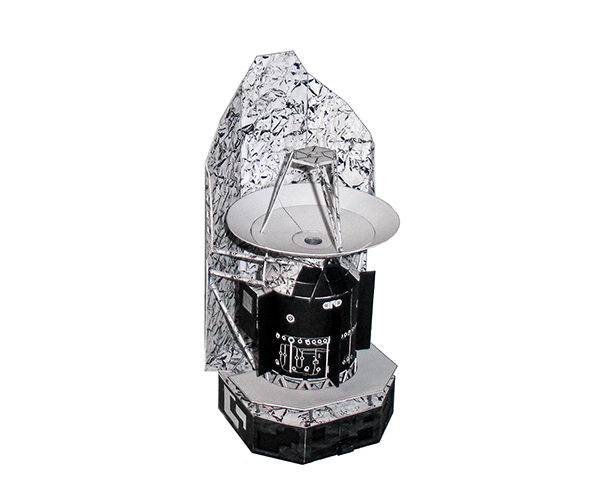 124
124
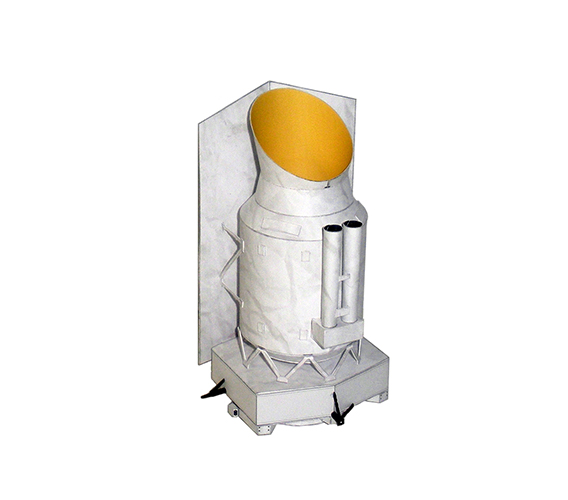
121..Hubble Space Telescope - The Hubble Space Telescope (HST), launched in April 24,1990 is one of the most iconic satellites in history. Few telescopes in history have had such a profound impact on astronomical research as the Hubble Space Telescope. In its 31 years of operation, Hubble has not only helped shape scientists' view of the universe, but it has also brought a glimpse of the wonders of the cosmos to homes worldwide. The world's first space-based optical telescope after American astronomer Edwin P. Hubble (1889 -- 1953). Dr. Hubble confirmed an "expanding" universe, which provided the foundation for the big- bang theory.
Download
122..SkySat 4-21 - The SkySat Satellite Constellation currently consists of 21 micro satellites in orbit with the first satellite launch of SkySat-1 in 2013, the other 19 satellites are modernised C Generation satellites. SkySat-C satellites are the first commercial earth observation satellites manufactured by Planet Lab (formerly Terra Bella) and is licensed to collect 50cm high resolution multi-spectral satellite and 0.81m panchromatic imagery for various applications in energy, defense, agriculture, forestry and environmental monitoring. Three of the SkySats (SkySat-16, -17 and -18) were launched on top of a stack of 58 SpaceX Starlink-8 satellites on 13 June 2020 aboard a Falcon 9 rocket, and three more (SkySat-19, 20 and 21) hitched a ride on another SpaceX mission on August 18, 2020.
This model represents SkySats 4-21 modernised C Generation satellites.
Download
123..Herschel - The Herschel mission, a trailblazing space observatory that provided a unique view of our cosmos during its almost four years of operations, leaves a legacy of treasured data, thousands of scientific papers, as well as a new generation of astronomers who cut their professional teeth on this remarkable endeavour. Launched in May 14,2009, Herschel was the largest infrared telescope ever built and the first space observatory to scrutinise the sky at longer, sub-millimetre wavelengths.
Note - this kit contains both the detailed and easy versions.
Download
124..ISO (Infrared Space Observatory) - The Infrared Space Observatory (ISO) was the world's first true orbiting infrared observatory. Equipped with four highly- sophisticated and versatile scientific instruments, it was launched by Ariane rocket in November 1995 and provided astronomers world-wide with a facility of unprecedented sensitivity and capabilities for a detailed exploration of the Universe at infrared wavelengths. The mission was a great technical, operational and scientific success with most satellite sub-systems operating far better than specifications and with its scientific results impacting practically all fields of astronomy. ISO was then permanently switched off on May 16, 1998.
Download
125
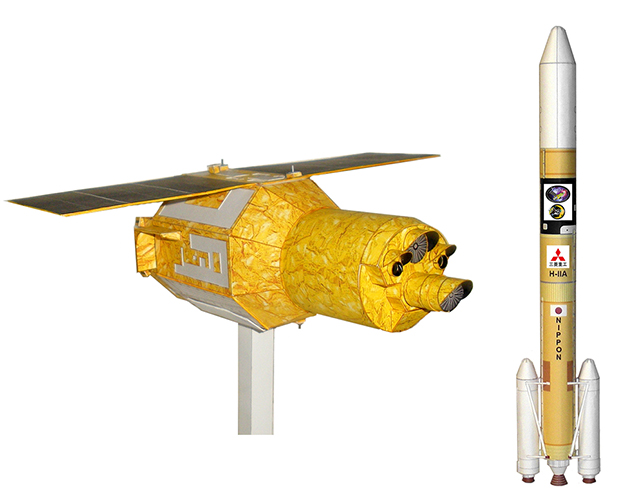 126
126
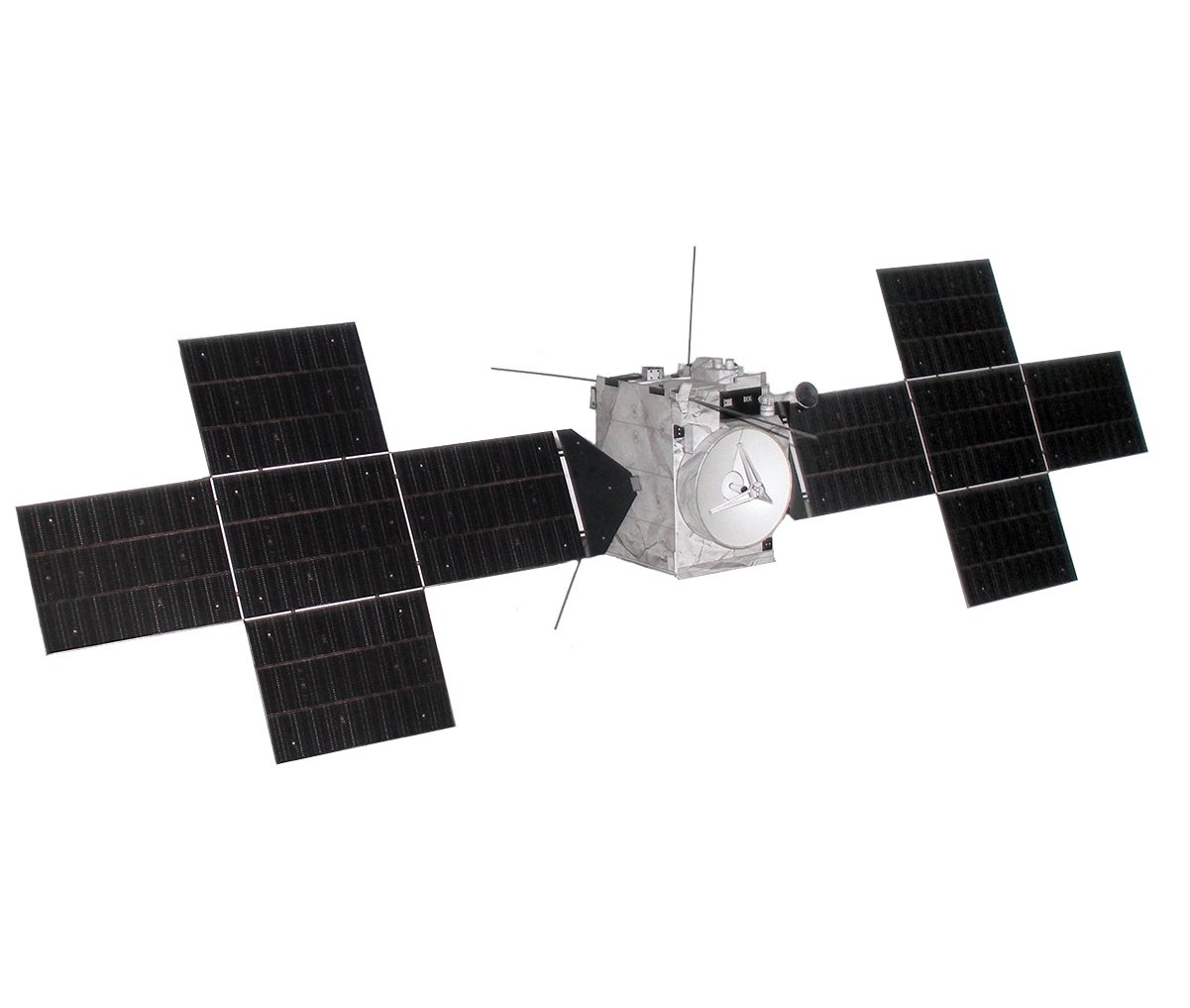 127
127
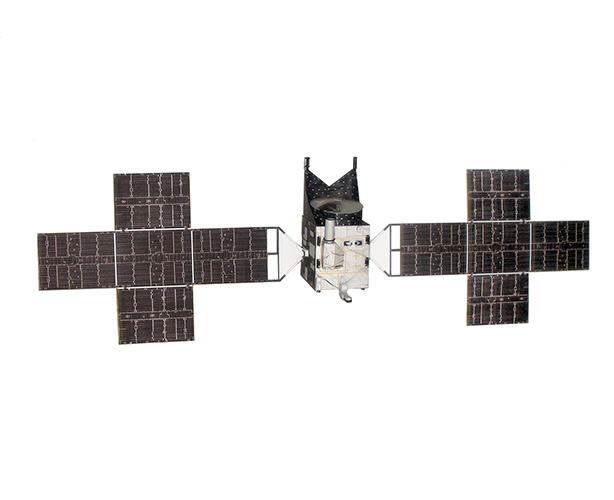 128
128
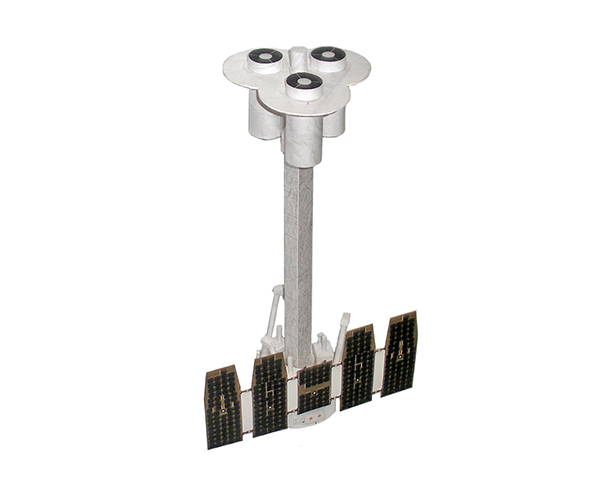
125..XRISM X-Ray Imaging and Spectroscopy Mission (pronounced "crism") - An X-ray space telescope mission of the Japan Aerospace Exploration Agency (JAXA) in partnership with NASA to provide breakthroughs in the study of structure formation of the universe, outflows from galaxy nuclei, and dark matter. As the only international X-ray observatory project of its period, XRISM will function as a next generation space telescope in the X-ray astronomy field.
NOTE: This Kit contains the detailed and easy versions with the H2 launch vehicle.
Download
126..JUICE (Jupiter Icy Moons Explorer) - A European Space Agency (ESA) mission to explore Jupiter and three of its icy moons: Europa, Callisto and Ganymede. JUICE was successfully launched on April 14, 2023, at 8:14 a.m. EDT (1214 GMT) from Europe's Spaceport in Kourou, French Guiana.
Download
127..Psyche - The first-ever mission to study a metal-rich asteroid, Psyche aims to help scientists learn more about the formation of rocky bodies in our solar system. The Psyche spacecraft will travel to a metal-rich asteroid of the same name orbiting the Sun between Jupiter and Mars in pursuit of studying the exposed nickel-iron core of an early planet, one of the building blocks of our solar system. The mission will also demonstrate NASA's first deep space test of the Deep Space Optical Communications (DSOC) system - high-bandwidth optical communications through space and back to Earth - from distances far exceeding the Moon - using a near-infrared laser. launched on October 13, 2023.
Download
128..IXPE (Imaging X-ray Polarimetry Explorer) - IXPE is the first mission to study the polarization of X-rays from many different types of celestial objects. Measuring the polarization of X-rays traces the story of where this light came from, including the geometry and inner workings of its source. IXPE was launched on December 9, 2021 on a SpaceX Falcon 9 rocket.
Download
129
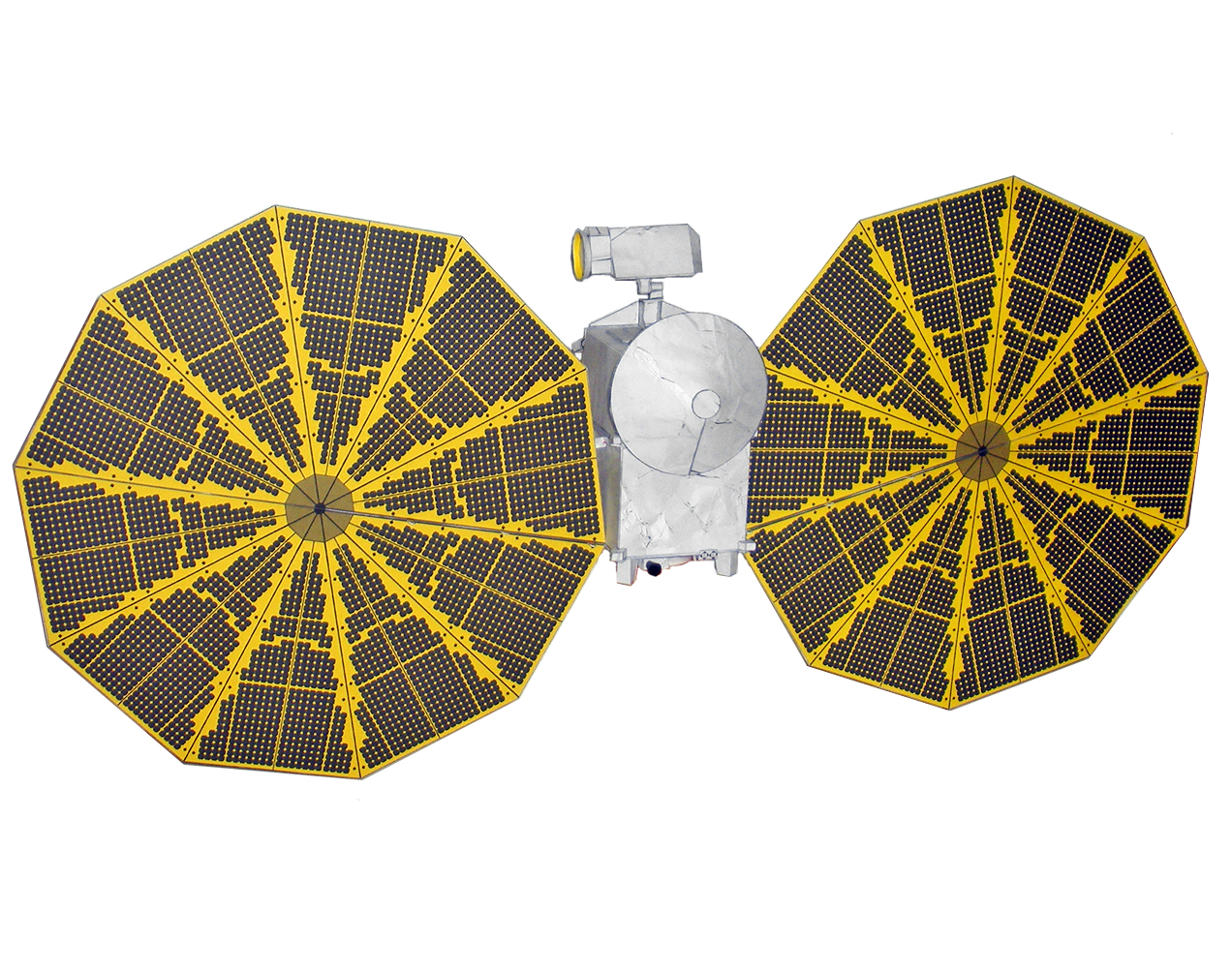 130
130
 Model.jpg)
129..LUCY - Lucy is the first mission to investigate the Trojans, a population of never-explored asteroids orbiting the Sun in tandem with Jupiter. The project aims to understand the formation and evolution of planetary systems by conducting flybys of these remnants of giant planet formation. It is also the farthest solar-powered mission from the Sun and will visit a record-breaking number of asteroids. LUCY was launched on October 16, 2021.
Download
130..Odysseus (NOVA-C Lander) - The United States is back on the moon for the first time since the Apollo astronauts set foot there more than 50 years ago. What's more, the vehicle that achieved the feat is now the world's first commercial spacecraft to land on a celestial body other than Earth. "Odysseus," Intuitive Machines' first Nova-C lander, touched down on Feb. 22, 2024 seven days after launching from Earth.Odysseus has already made a bit of history on its journey through space. The vehicle is powered by a single engine that is fueled by liquid oxygen, or LOX, and liquid methane, which are tricky propellants because they have to remain at super-chilled temperatures. The spacecraft is also the first to ever use those fuels while in orbit.
Download